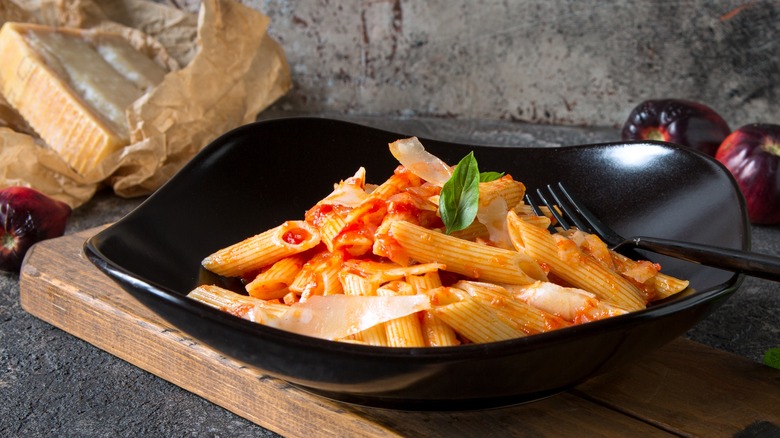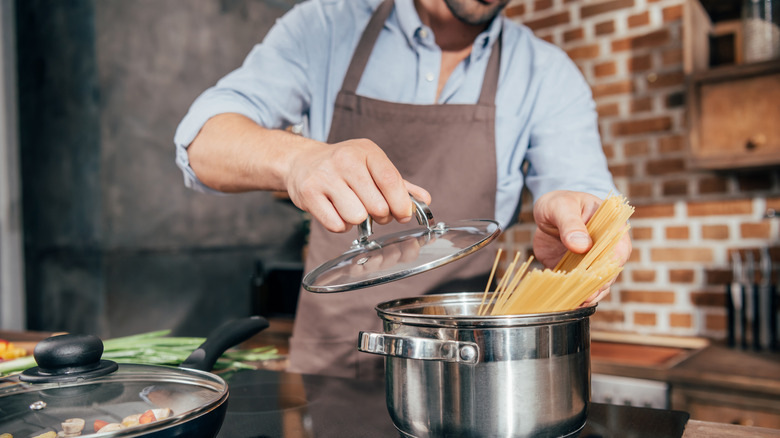Tricks To Make Your Pasta Healthier
Pasta may not be the healthiest food, but it's a better option than some other foods. Whether we're talking about penne, spaghetti, or ravioli, this classic Italian dish has its place in a balanced diet. For starters, it's high in protein, potassium, selenium, folate, and other key nutrients. A cup of cooked pasta has only 220 calories and about 8 grams of protein, reports MyFoodData. You'll also get 43 grams of carbs, including 2.5 grams of fiber, and doses of iron, magnesium, and phosphorus. White rice has a similar calorie count, but it's lower in fiber, protein, and essential vitamins and minerals, such as thiamin and selenium.
Semolina, the flour used in most types of pasta, is made from hard durum wheat, according to Consumer Reports. This wheat variety contains higher amounts of protein than regular wheat, and therefore it's digested at a slower rate, keeping you full longer. As an added benefit, pasta consumption may protect women against heart disease and stroke, suggests a 2021 study published in BMJ Nutrition, Prevention & Health.
However, pasta is high in carbs and should be enjoyed in moderation. Plus, it's often served with cheese, melted butter, prosciutto, sauces, and other extras, which can increase the calorie count. For example, a piece of lasagna with meat and spinach has over 400 calories, 20 grams of fat, and 26 grams of carbs, per MyFoodData. This doesn't mean you should give up your favorite pasta dishes, though. Instead, use these tricks to make them healthier!
How to make your pasta healthier and more delicious
First, opt for whole-grain pasta whenever possible. Eating whole grains may help reduce inflammation and protect against chronic disease, notes Harvard T.H. Chan School of Public Health. What's more, this habit can improve glycemic control, improve cardiovascular health, and increase your lifespan. Second, add some tuna, salmon, beef, or other high-protein foods to the mix. Protein slows down digestion and helps prevent blood sugar spikes, explains WebMD.
Northwestern Medicine recommends serving pasta with broccoli, garlic, spinach, and other veggies to get more nutrients in your diet. This trick can also curb hunger and increase satiety because most vegetables are high in fiber, says the Mayo Clinic. Go one step further and swap the cheese for nutritional yeast, which boasts 15 grams of protein and nearly 6 grams of fiber per ounce, as reported by MyFoodData.
Note that pasta sauces are often high in sugar, sodium, and fat. A half cup of alfredo sauce boasts 191 calories, almost 20 grams of fat, and nearly one-third of the maximum recommended daily sodium intake (per MyFoodData). Cheese sauce, marinara sauce, and other popular options are not necessarily healthier either. Your best bet is to use a light tomato sauce or olive oil, herbs, and spices. Thick sauces pack the most calories, but you can make them healthier by replacing cream with Greek yogurt, suggests Northwestern Medicine.


